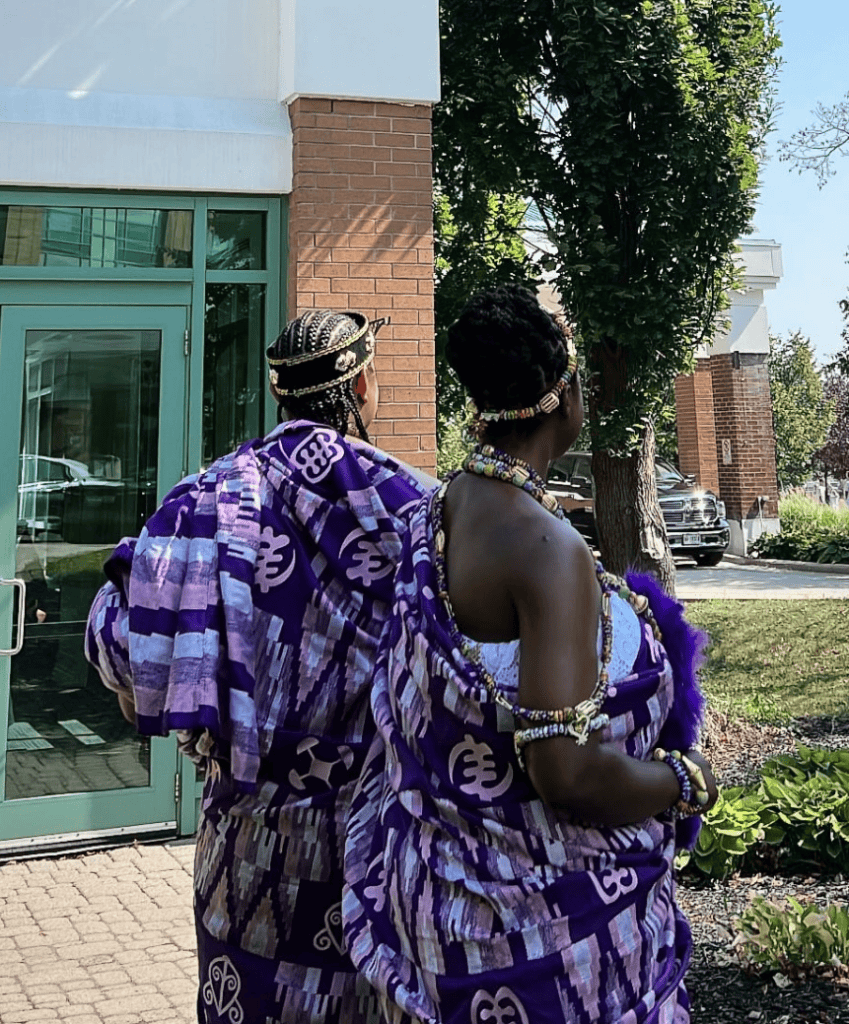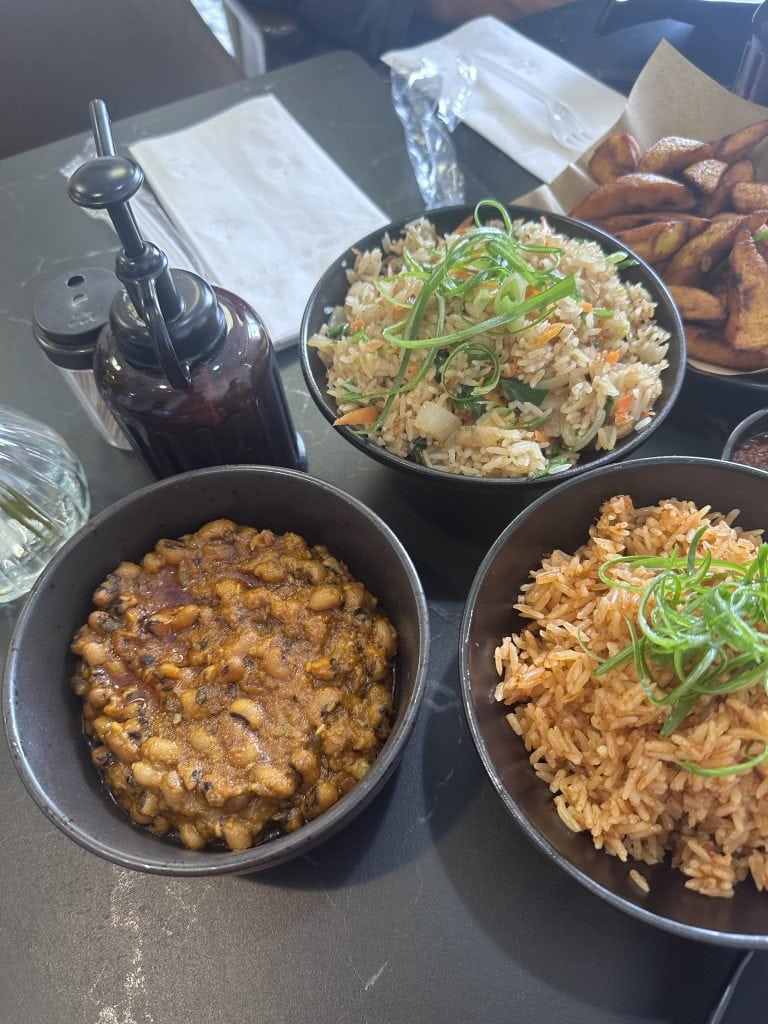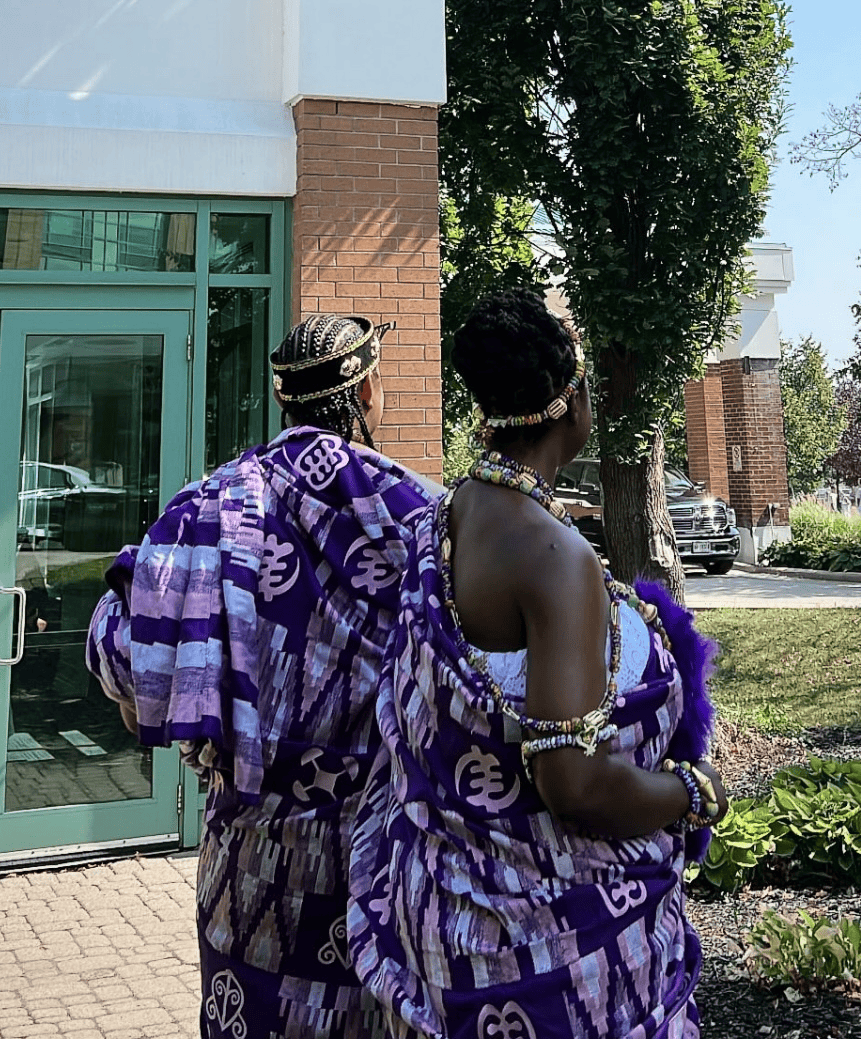This summer, my husband and I got married following traditional Asante customs with Christian elements, while merging cultures. There were many preferences, health concerns and palettes we had to be considerate of given our diverse family and guest list. With these in mind, we (as in I) put together a simple menu that everyone could enjoy. I know this may not be the norm, but if you ever find yourself planning a cultural wedding that requires various accommodations, my menu can offer some inspiration.

A brief overview of Ghanaian (Asante) weddings
Marriage is an important milestone for many cultures across Ghana. Each culture in Ghana has its own traditional wedding process, with numerous steps and customary practices. As my family is Asante, and I was the bride, my culture’s marital practices took precedent. I also planned the wedding, so I made most of the decisions.
In summary, the Asante wedding process begins with a knocking ceremony (a small family introduction between two families). It is followed by the traditional wedding, where both families come together to witness the union of the couple. Some might choose to proceed with a more Western-style wedding afterward, but due to preferences, we stuck to just the traditional practices with an abbreviated Christian ceremony right after. Everything took place in the same location. I give this summary because it dictated the amount of food we had to buy.
As an aside, we do not have a tradition of including specific foods and ingredients in any part of the ceremony, say as some cultures across West Africa might break kola nut or serve raw garden eggs etc etc. This further simplifies the food preparations.
Planning the menu
With the cultural rules set in place, we had to plan the menu. There were many factors to consider. While Ghanaian foods do have a plant-based foundation, how it is served is not plant-based — there is always fish and meat present, especially for special occasions. People are not necessarily concerned with allergens, nor is the average Ghanaian consciously choosing a plant-based diet/lifestyle. Most traditional Ghanaian weddings cater to a predominantly Ghanaian audience, so the only major concerns are whether the food tastes good and if it is fresh. It could even be late for all you knew but that’s not pressing.
Our predicament was different. I am a plant-based bride, and my in-laws do have allergies we needed to be cognizant of (the allergies also meant that we had to be mindful of the plant-based offerings because nuts and seeds are commonly used in plant-based cooking). My husband is not Ghanaian (Bajan and German ancestry), which meant our guest list would be diverse, have different spice tolerances, and the food needed to be available on time. I also had a budget to stick to, so I avoided an opulent display of food.
From the beginning, I gave up the idea of a fully plant based wedding. Quite frankly, I did not care. It was more important that the food was safe for everyone to eat. We were having an evening wedding, so we wanted to ensure that there were snacks for the guests before dinner. With these guidelines, we settled on having small appetizers, a local drinks bar, a hot buffet and then cake.
Shoutout to my good friend Nadia (@travelandmunchies), who captured all the food content for my special day.
Appetizers
Take-away packs of snacks are standard at many Ghanaian parties or events, especially when there is no main meal served or the food is served much later. Usually in these packs you get savoury flour chips, achomo/chin (which are little cubes of deep-fried, crunchy flour “cookies”), meat pie, and maybe plantain chips.
My mum found the vendor for this portion, and settled on a pack with savoury chips, sweet coconut chips (a cross between achomo and poloo — a coconut fried cookie), and tuna pie, instead of meat pie. I love that they did add a little bit of our kente cloth (traditional cloth) design to the packaging. Unfortunately, none of these options were plant-based, so we included a bag of plantain chips for the plant-based/dairy-free guests. She also included a small pack of fresh fruit.
These were handed to the guests when the ceremony started. Almost like snacks for a show.

Drinks
West Africans have an extensive repertoire of drinks we enjoy regularly, and of course, at any gathering, including weddings. Most of these drinks utilize indigenous West African spices, grains, fruits and flowers. I found my vendor online — Maa’s Natural Sips, and she has a diversity of drinks people can choose from. I also liked that she has a really nice set up to highlight our culture. Given our audience, we went with a classic spiced hibiscus drink (sobolo) to introduce people to Ghanaian flavours; we also had plain pineapple juice (usually made with ginger, but we opted for just pineapple to offer a mild option); lastly, we chose a spicy tamarind drink (hausa beer). The drinks were refreshing, and surprisingly, the tamarind was the most popular. You can find recipes for these drinks on my website.
Buffet
For the hot dinner, we went with classic party food, rice, a protein and salad. I unfortunately had my first vendor ghost me, but my second vendor (African Chop Bar) did a phenomenal job. Till this day, we keep getting compliments for the food. In March, we did a sample tasting of the food options.

We started with two rice dishes — jollof rice and fried rice. Jollof rice, especially for parties, is typically made with chicken, goat or beef stock, sometimes with chunks of beef in it. We opted to remove any animal ingredients to keep it plant based. For the fried rice, we asked for no egg and sesame seeds to keep it plant-based and seed-free. We also asked for plantain and beans, which might not be a typical wedding meal, in fact, its a basic lunch meal, but I like plantain and beans, and it is easy to make it vegan. For our tasting, the beans were made with fish, but we asked to have it switched to fermented locust beans. We also served grilled chicken, shitɔ (which is an aromatic hot sauce typically served with jollof), and salad (instead of a creamy Ghanaian style salad, we went with a plain garden salad to ensure everyone can eat some and kept the dressing on the side).

Dessert
My favourite part of this experience was curating the dessert menu. It was a deeply personal experience for me, as it was the only opportunity I had with our menu to put together something that truly signified our union. I have detailed the entire process in my upcoming newsletter, but I will leave the final cake list below.


